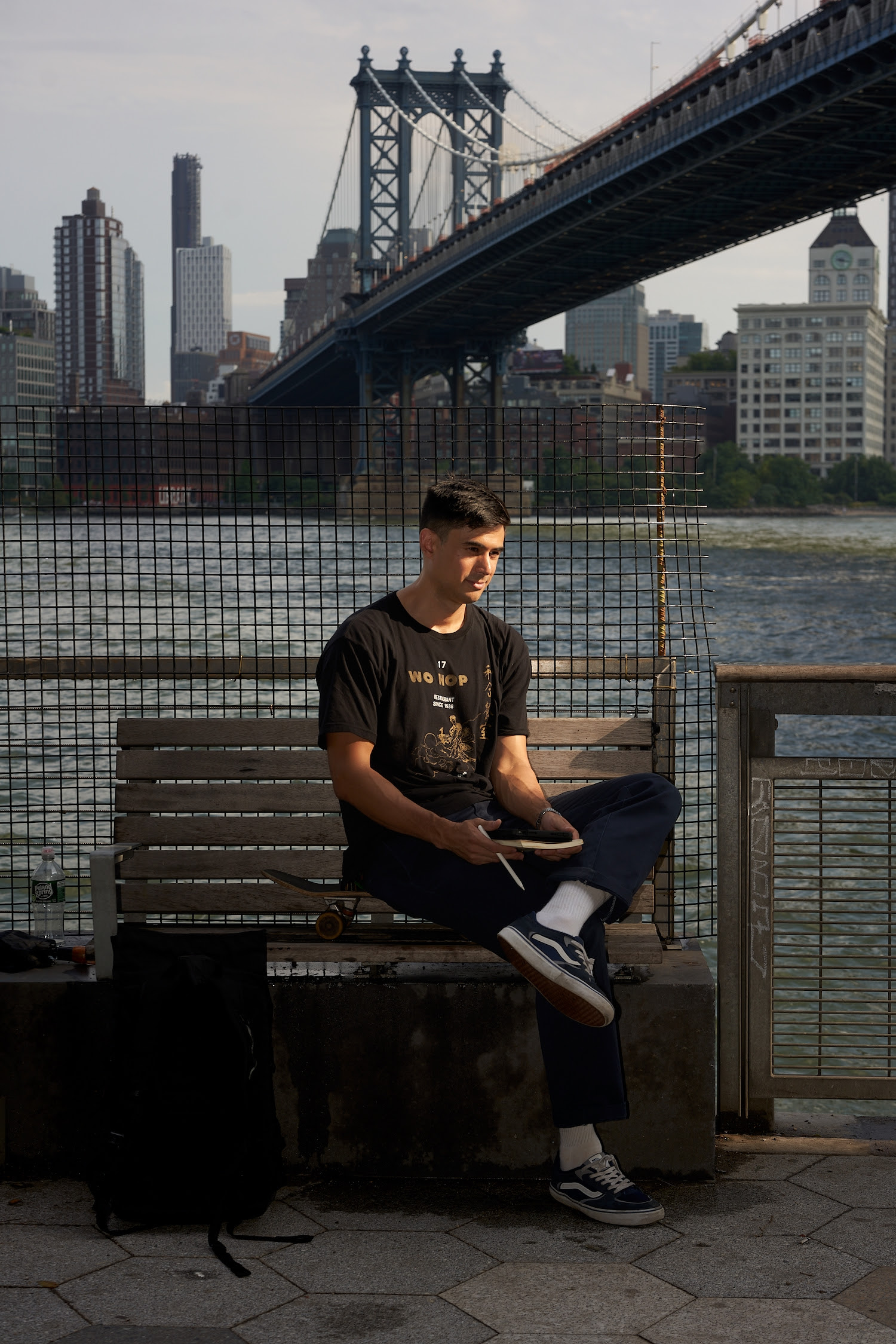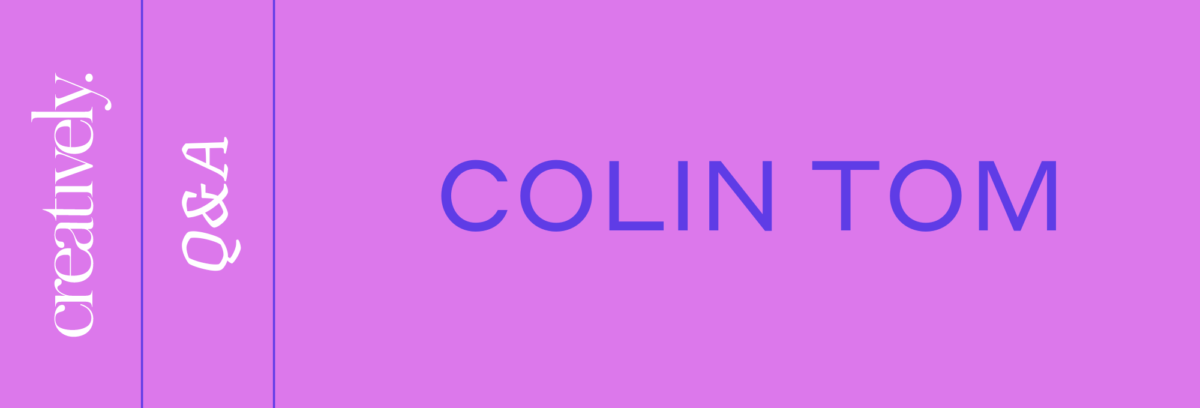Call it eavesdropping or art, but artist and illustrator Colin Tom‘s “Overheard New York: Lurking Along Canal Street” series is a damning characterization of downtown NYC culture. As a cartoonist for The New Yorker, Tom embeds his acute observation of social environments and translates individual soundbites of conversations from passersby into ironic vignettes.
“Overheard New York” is but one of the several New Yorker cartoons that Tom has contributed since 2015. Illustratively, he often incorporates objects that he’s drawn repetitiously to the point of iconography, mixing and matching forms to create a punchline that is just out of reach. Tom flexes his keen observation skills to work individual human truths into broad tropes that warrant Instagram Story reshares.
Tom has participated in several fine art and design exhibitions in New York, Mexico, and Paris. He has also worked on visual branding and design for Mumford Brewery, a Los Angeles independent brewery; Bitchin’ Sauce, a family-owned and operated almond-based dip company; and Burrow, a modern furniture company.
You can check out more of Tom’s work here on Creatively and @hellocreatively on Instagram.

What is the first creative project you remember?
When I was four years old, I had a magnetic drawing board on that I could draw an image and then quickly erase when I pulled the slider across the board. I would draw, erase, and repeat, like I was getting repetitions in. I drew fast and communicatively, almost like I was writing. I would gravitate toward recurring images and characters. My first distinct memory of that time was drawing a circle with a face, stick figure arms and legs, and a line across the midsection to represent pants. That was my first character.
Describe your aesthetic in three words.
Broadly, personal, lines.

What was the most fulfilling collaboration you’ve worked on?
The ongoing practice of drawing cartoons for The New Yorker is the most fulfilling collaboration I work on. There aren’t any prompts or guidance from the editors, really. I give them drawings, and they’re accepted or they aren’t. (The majority of submissions aren’t.) It’s fulfilling in the sense that what gets published is all me, and what I draw is often hyper-personal within a broader trope. I’m always honored to have these drawings included in a magazine with such accomplished writers and artists.

What’s one creative project that taught you something fundamental about yourself?
I did a long-form piece for The New Yorker titled “Overheard New York: Lurking Along Canal Street,” in which I was asked to sleuth around an area of New York and illustrate snippets of overheard conversation. My chosen area of Canal Street and the environments I observed were just an extension of my personal life. It’s an area I bartended in, socialized, skateboarded, and ate Chinese food in for a decade. The publication and positive response to the project reinforced the idea of creatively staying within myself. Nobody can do you as well as you, so work with what you know, even when you feel a self-constructed or external pressure to make something more than just yourself.

Do you think creativity is something you’re born with, or something you’re taught?
I think some people are born with certain compulsions that can be channeled into a creative outlet. Showing up is half the battle of any practice, and if you show up out of necessity rather than choice, you can be a prolific creative. That being said, everyone has their own perspective and can create. Even if you think you’re objectively bad at something, that can be your edge if you apply it properly. Creativity can certainly be taught and learned; it’s just a matter of whether that person is motivated to continue showing up and chipping away at it.
What’s the last dream you had?
My alarm sounds, and I wake up early to answer emails in my underwear while I’m eating breakfast. I sit at my laptop, locked in for hours, still in my underwear, and work through my most tedious obligations with militant discipline. I feel very “Wow, look at me; I’m doing this” about it. Then my alarm sounds in real life, and I’m late, and everything is overdue.

One hundred years from now, what do you hope people write about your work?
That I resonated with people. That I illuminated something in them that helped them feel something in themselves. That I look great for a centurion, and I shouldn’t take any written criticism of my work personally.
Follow @colintom on Creatively.
Creatively is more than a platform—we’re a creative collective.
Questions or feedback? Email us at feedback@creatively.life.

